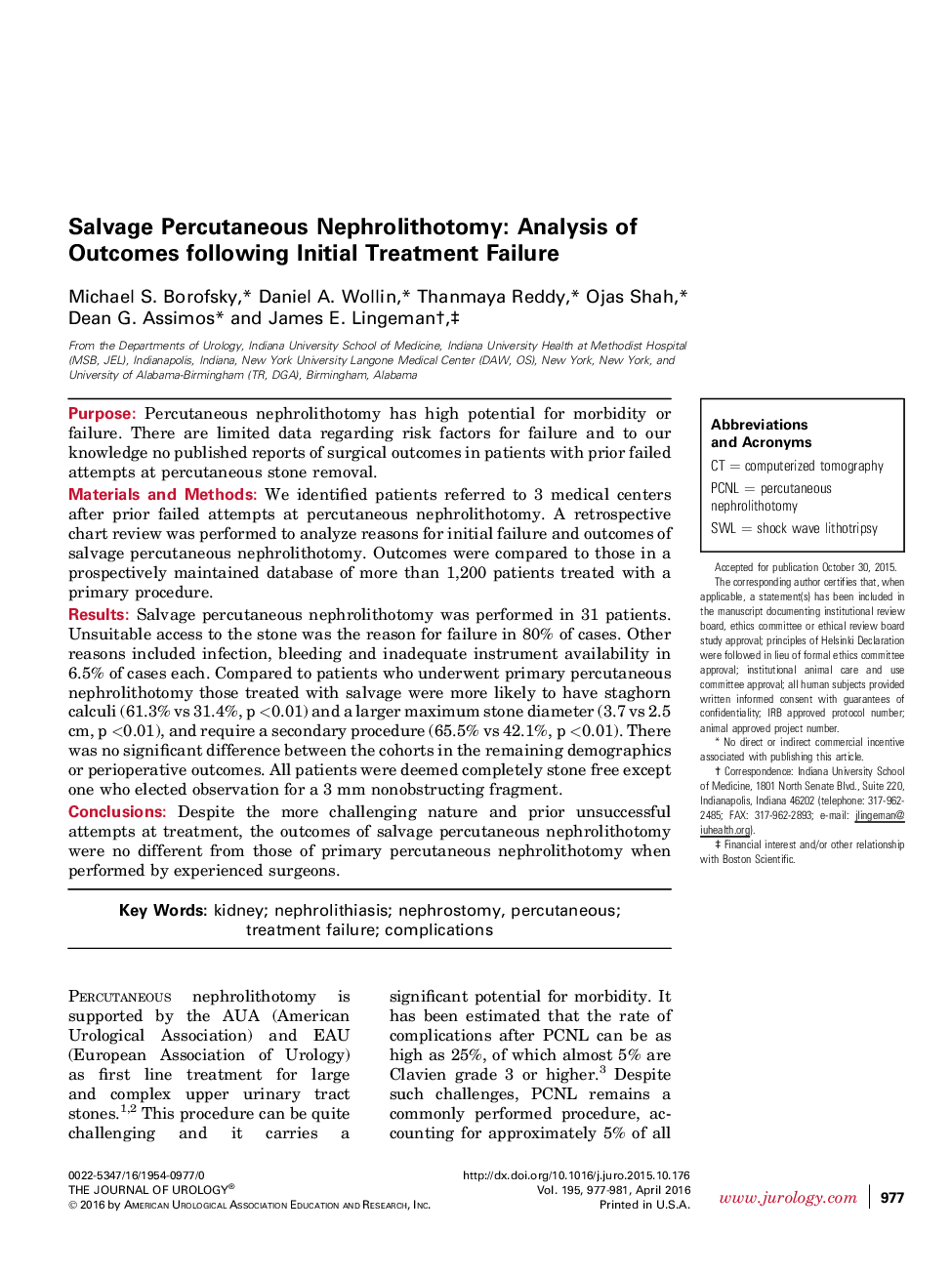| Article ID | Journal | Published Year | Pages | File Type |
|---|---|---|---|---|
| 3858550 | The Journal of Urology | 2016 | 5 Pages |
PurposePercutaneous nephrolithotomy has high potential for morbidity or failure. There are limited data regarding risk factors for failure and to our knowledge no published reports of surgical outcomes in patients with prior failed attempts at percutaneous stone removal.Materials and MethodsWe identified patients referred to 3 medical centers after prior failed attempts at percutaneous nephrolithotomy. A retrospective chart review was performed to analyze reasons for initial failure and outcomes of salvage percutaneous nephrolithotomy. Outcomes were compared to those in a prospectively maintained database of more than 1,200 patients treated with a primary procedure.ResultsSalvage percutaneous nephrolithotomy was performed in 31 patients. Unsuitable access to the stone was the reason for failure in 80% of cases. Other reasons included infection, bleeding and inadequate instrument availability in 6.5% of cases each. Compared to patients who underwent primary percutaneous nephrolithotomy those treated with salvage were more likely to have staghorn calculi (61.3% vs 31.4%, p <0.01) and a larger maximum stone diameter (3.7 vs 2.5 cm, p <0.01), and require a secondary procedure (65.5% vs 42.1%, p <0.01). There was no significant difference between the cohorts in the remaining demographics or perioperative outcomes. All patients were deemed completely stone free except one who elected observation for a 3 mm nonobstructing fragment.ConclusionsDespite the more challenging nature and prior unsuccessful attempts at treatment, the outcomes of salvage percutaneous nephrolithotomy were no different from those of primary percutaneous nephrolithotomy when performed by experienced surgeons.
